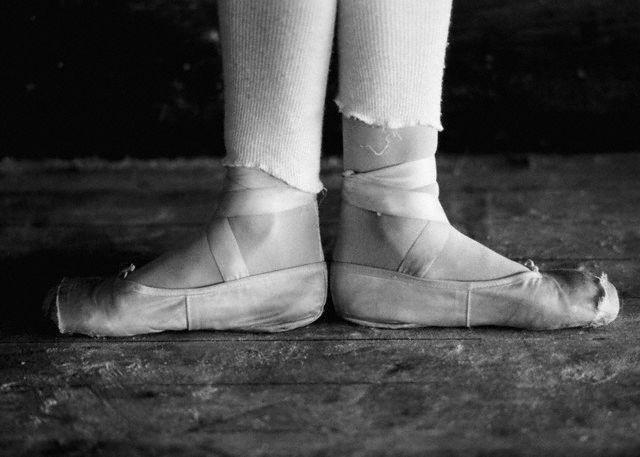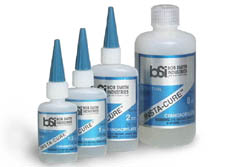Preserving The Life of Your Pointe Shoes
Pointe shoes—those tiny, shiny, glorified piñatas, which
today, make it possible for ballerinas to dance complete, three-act ballets on
their pointes. They can be expected to last anywhere from 3 months to 3
hours, depending on the demand placed on them. For a dancer in a professional company, they are considered
work supplies, and the cost is put on the company she/he dances for. In the case of students, the cost of
these educational tools, which can run between $40-$85 a pair, is often on the
parents or the student themselves to cover. The more the student is dancing, the quicker this pointe
shoe budget adds up.
 Why do the shoes break down so fast? The
answer is simple: most pointe
shoes are made from natural materials (leather, cardboard, burlap, layers of
paper, glue, and satin). These
materials create a supportive structure that is also pliable enough to move
with the dancers feet. As the
dancer’s feet bend and pound these little fortresses of strength, they break
down. A soft, or unsupportive shoe
not only makes it difficult for the dancer to achieve proper placement on the
toes, it also becomes dangerous, as it adds increased strain to achieve said
placement, without the support to ensure that the shoe stays where the dancer
intended. If danced on too long,
beyond the point of structural integrity, the shoes can become the unnecessary
culprit of strains, sprains, twisted ankles, even stress fractures.
Why do the shoes break down so fast? The
answer is simple: most pointe
shoes are made from natural materials (leather, cardboard, burlap, layers of
paper, glue, and satin). These
materials create a supportive structure that is also pliable enough to move
with the dancers feet. As the
dancer’s feet bend and pound these little fortresses of strength, they break
down. A soft, or unsupportive shoe
not only makes it difficult for the dancer to achieve proper placement on the
toes, it also becomes dangerous, as it adds increased strain to achieve said
placement, without the support to ensure that the shoe stays where the dancer
intended. If danced on too long,
beyond the point of structural integrity, the shoes can become the unnecessary
culprit of strains, sprains, twisted ankles, even stress fractures.  How can I tell if my shoe is “dead” or “dying?” The
most common places for shoes to break down are the tip of the toe box, the
sides of the box, and the shank.
When any of these areas give too willingly to pressure, it’s time to get
a new pair of shoes, but there are some little tricks to prevent the softening
of these areas before it comes to this.
The following methods can be used in tandem, on their own and tailored
to your own personal needs. As I
tell my students, pointe shoes are a big responsibility—not only must you be
alert and aware of what your feet are doing in them, but you must also build a
relationship with the shoe itself—know your make/model/size/strength, what
parts of the shoe break down for you, what strength of shank do you like? Do you like your box to have “wings”
for further support on the sides?
How long do you like your vamp?
A good pointe shoe fitter should be able to give you guidance and
suggestions, but ultimately, it is your decision. Don’t ever let a pointe shoe fitter bully you into a pair of
pointe shoes—and for heaven’s sake don’t make your grandmother sew them for
you. Pointe shoes are a very
personal item, and the dancer needs to be involved in the intimate details of
preparing and preserving them.
How can I tell if my shoe is “dead” or “dying?” The
most common places for shoes to break down are the tip of the toe box, the
sides of the box, and the shank.
When any of these areas give too willingly to pressure, it’s time to get
a new pair of shoes, but there are some little tricks to prevent the softening
of these areas before it comes to this.
The following methods can be used in tandem, on their own and tailored
to your own personal needs. As I
tell my students, pointe shoes are a big responsibility—not only must you be
alert and aware of what your feet are doing in them, but you must also build a
relationship with the shoe itself—know your make/model/size/strength, what
parts of the shoe break down for you, what strength of shank do you like? Do you like your box to have “wings”
for further support on the sides?
How long do you like your vamp?
A good pointe shoe fitter should be able to give you guidance and
suggestions, but ultimately, it is your decision. Don’t ever let a pointe shoe fitter bully you into a pair of
pointe shoes—and for heaven’s sake don’t make your grandmother sew them for
you. Pointe shoes are a very
personal item, and the dancer needs to be involved in the intimate details of
preparing and preserving them.
Acrylic –
strengthens box, prevents deterioration of cardboard shank.
-Applied inside box, and on cardboard shank (in the absence
of cotton or suede liner).
-Available in a paint can (for use with a brush) and in an
aerosol spray can.
I switched from shellac to acrylic, or more specifically, Minwax®
Polycrylic®, because I preferred the clear finish to the amber stain that often
discolored my pointe shoes. The
paintbrush method allows you to create a thicker layer and to have more control
over where the hardener goes, but I’ll admit, the aerosol spray is very convenient
and has no cleanup. Applying
acrylic to the inside of your box is just one more way to increase its strength
before it has a chance to break down.
I like to apply it after I’ve tried on my shoes and softened them just a
little to form to my feet. I
always turn the heels of my pointe shoes inside out, to allow more access to
the inside of my shoe. Acrylic is
also fantastic for sealing the cardboard shank if the cotton or suede sole
liner starts to lift and come out of your shoe (especially helpful if you are
cutting your shank down to ¾ ).
Once acrylic is applied, I let my shoes dry overnight in the oven using
this method:
1) Pre-heat oven to 250º
2) Turn oven off (most important step, in my opinion)
3) Place shoes on oven rack (with heels still inside out)
and let dry until morning
-Applied VERY CAREFULLY to the inside of the shoe. A close cousin of super glue, this
stuff dries fast and hard, bonding ANYTHING it comes in contact with.
-Keep your distance: the fumes from the bonding reaction can
irritate eyes.
 I’m not sure who had the idea to use instant-bonding model
airplane glue on their pointe shoes, but whoever they are, they are
brilliant. This glue is perfect
for when you need a quick fix between rehearsals or performances, stopping
breakdown in its tracks. The most
common brand, available in dance stores is Jet Glue®, but an alternative brand
is Insta-cure® Super Thin Cyanoacrylate (available in hobby stores). Both brands sell different formulas of
the glue, so you want to make sure you get the blue color (most thin,
quickest-drying). If you decide to
keep this stuff in your dance back, keep it in a double bagged in a sealed
plastic sandwich bag—this stuff WILL leak no matter what you do.
I’m not sure who had the idea to use instant-bonding model
airplane glue on their pointe shoes, but whoever they are, they are
brilliant. This glue is perfect
for when you need a quick fix between rehearsals or performances, stopping
breakdown in its tracks. The most
common brand, available in dance stores is Jet Glue®, but an alternative brand
is Insta-cure® Super Thin Cyanoacrylate (available in hobby stores). Both brands sell different formulas of
the glue, so you want to make sure you get the blue color (most thin,
quickest-drying). If you decide to
keep this stuff in your dance back, keep it in a double bagged in a sealed
plastic sandwich bag—this stuff WILL leak no matter what you do.
Shoe Goo – Bonds a
loose cardboard shank back down to the sole.
-Apply underneath cardboard shank—about a nickel-sized
dollop will do.
-Dries overnight with clamp (a simple clothespin or two
should do the trick).
 Your pointe shoes have nails in them—yes, nails—well, tacks,
really. One down by the ball of
your foot, and one at the heel, to keep all those cardboard layers attached to
the leather sole of your shoe.
With all the foot-pointing that goes on in ballet, these nails
occasionally come loose. You have
two options: buy more tacks and hammer a replacement in, or glue them together
with a pliable, yet hardy, glue.
Since I am more likely to hit my finger with the hammer than the tack, I
opt for Shoe Goo®. Originally
invented for tennis shoe repair, this stuff is tough against moisture,
flexible, and as a bonus, can be used on your street shoe repairs, as well.
Your pointe shoes have nails in them—yes, nails—well, tacks,
really. One down by the ball of
your foot, and one at the heel, to keep all those cardboard layers attached to
the leather sole of your shoe.
With all the foot-pointing that goes on in ballet, these nails
occasionally come loose. You have
two options: buy more tacks and hammer a replacement in, or glue them together
with a pliable, yet hardy, glue.
Since I am more likely to hit my finger with the hammer than the tack, I
opt for Shoe Goo®. Originally
invented for tennis shoe repair, this stuff is tough against moisture,
flexible, and as a bonus, can be used on your street shoe repairs, as well.
Other Ways To Preserve Your Pointe Shoes
-Make sure to let them completely dry between uses. Mesh
carrying bags, cedar and rice sachets—all of these things can help fight
moisture retention.
-Don’t shove them in the bottom of your ballet bag—crushing
them by letting them be the first thing in the car trunk—under your school
books, is the perfect way to sacrifice the structural integrity of your pointe
shoes.
-Reuse old ribbons and elastic. Are your old ribbons and elastic still in good shape? Remove them from your old, dead shoes
and reuse them on your new pair.
Ribbons and elastic can be tossed in the washing machine and air-dried.
-Cutting-down the shank (for more advanced dancers). Once your feet have developed the
needed strength, you can experiment with ripping/cutting the heel portion of
your shank out – you will have to remove the nail with needle-nosed
pliers. This removes unwanted
pressure from your shank, which will cause it to remain stronger, longer.





Pointe shoes are delicate. As we all can see, it's usually made of satin fabric and it has no rubber sole, which make it possible for the ballerinas to move flexibly. On the other hand, it's also has a downside. Because it's sole-less, there'd be no support if you want to fix it. That's why it needs further care, especially when you're trying to put some glue.
ReplyDelete#Shannon@InstantCA.com
It would be great if you do a youtube video with demonstrations of applications for all your ideas.
ReplyDelete